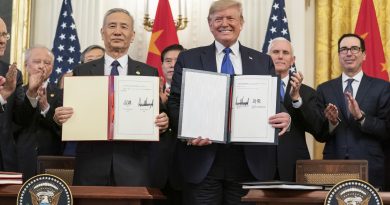Syrian Ceasefire Begins, A Shaky Peace Holds
By Angelo Piro
Staff Writer
On February 27, the people of Syria began to see the first hint at peace since the bloody civil war in their country began. The deal, backed by the United States and Russia, is meant to halt all fighting between the moderate opposition groups, the government, and the Kurdish militias. The peace was a welcome sign for many in the war-torn country. One rebel leader told Reuters, “Saturday was the first day that people could really go out and walk the streets.”
And many did more than walk the streets, as key rebel cities like Aleppo and Homs hosted new protests against the Assad regime, with the slogan, “The Revolution Continues.”
The deal was still shaky in the first week of its implementation; there were multiple instances of violations by either Russian or Assad warplanes conducting air raids on some cities. But many officials are saying the deal is holding better than expected, with some U.S. officials noting a significant reduction of violence. Additionally, the delivery of aid, another key part of the deal, has been greatly expanded, with over 100,000 people receiving aid that had been previously blocked.
Robert Ford, former U.S. ambassador to Syria, points to negative aspects of the deal. “I see zero prospect of a political deal. The cessation of hostilities, if it lasts, will just lead to a de facto partition of Syria,” Ford said to the Wall Street Journal.
One issue not addressed in the deal is the issue of various terrorist groups operating in Syria. While the ceasefire includes a peace between the moderate groups and the government, the deal still allows for fighting against the Islamic State, Jabhat al-Nusra, an Al Qaeda-linked group, and any other group with a United Nations terror designation. This is likely to shift the fighting from direct conflict into more of a cold war, as each side seeks to prevent the other from gaining the resources of ISIS held territory for what many see as the eventual return to fighting.
Though the ceasefire has held relatively well, it has still not been without its challenges. Staffan de Mistura, the United Nations Special Envoy on Syria, has said that while aid is now being allowed in certain areas due to the ceasefire, it has been obstructed and delayed by the Syrian regime, according to US News. Additionally, the World Health Organization has said that the government has blocked the delivery of key medical supplies to the city of Moadamiya. Going forward, the various violations of the ceasefire and ongoing challenges will test the resolve of both sides.
While the ceasefire itself is a welcomed respite in the five-year Syrian conflict, many observers are already looking beyond the ceasefire towards a more permanent solution. De Mistura recently announced that, along with the ceasefire deal, he will also be convening a new round of peace talks starting on March 10, with commitments to attend from the government, main opposition groups and civil society groups, with a special emphasis to be placed on the role of women in the conflict. Of additional importance is the backing of Russia, a key voice in the process, for the peace talks.
In a press conference following a conference call between the leaders of France, Germany, Italy, the United Kingdom and Russia, a spokesman for German Chancellor Angela Merkel said that all leaders on the call agreed that “We have got to use this as a positive dynamic now to create some momentum behind the talks so we can move from a truce into a more lasting, durable peace with a political transition away from Assad.”

